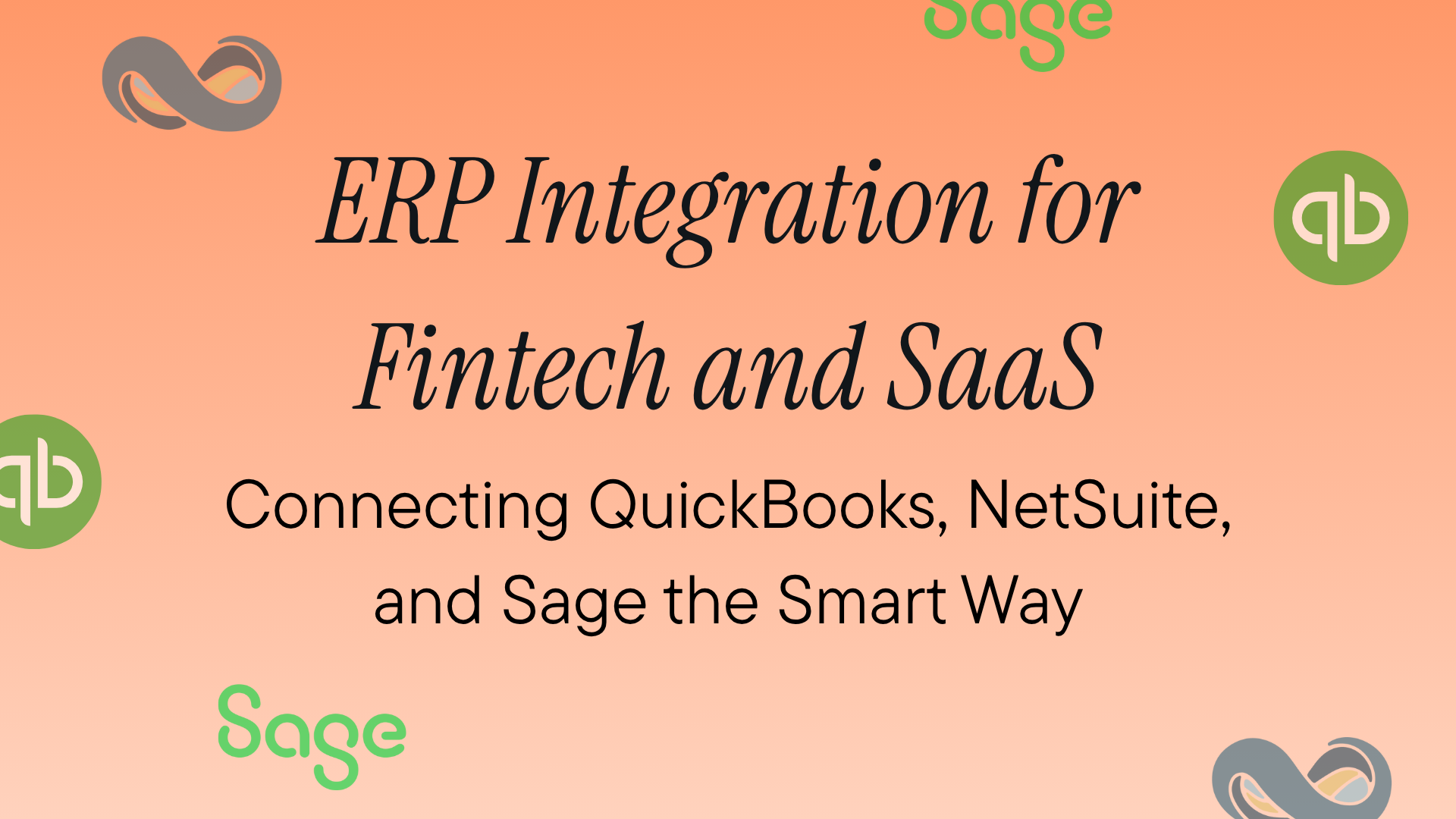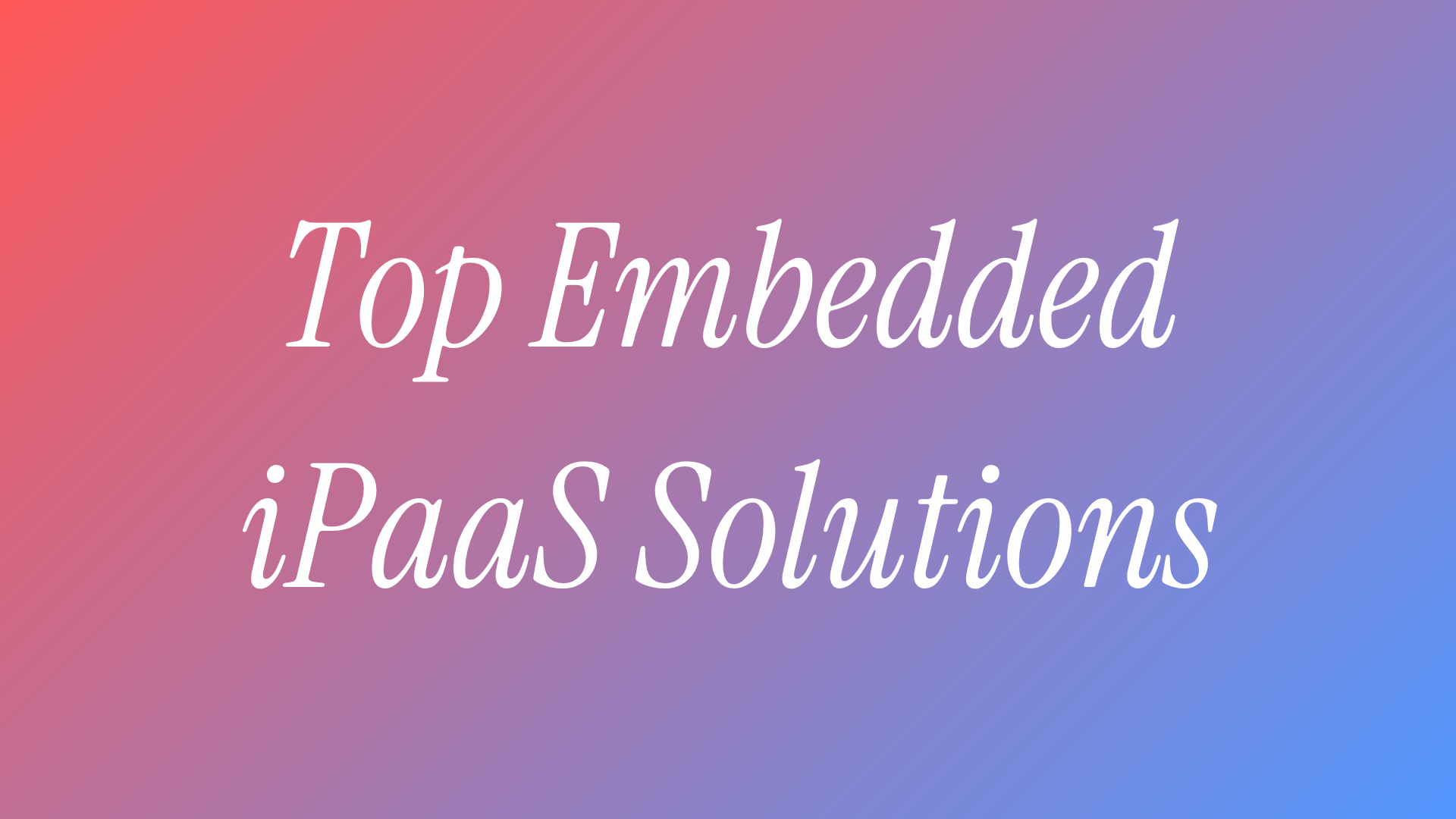Why ERP Integration Matters in Fintech & SaaS
ERP systems run the financial operations of most businesses. QuickBooks manages invoices for millions of SMBs. NetSuite powers enterprise finance teams. Sage handles accounting across Europe. If you're building fintech or SaaS products, your customers' data lives in these systems.
The demand is clear: fintech platforms need ERP data for risk assessments and lending decisions. SaaS billing tools must sync with customer accounting systems. Expense management apps require two-way data flow with financial records. Yet despite this critical need, ERP integration remains one of the biggest technical bottlenecks for product teams.
Integration projects that should take weeks stretch into months. Engineering teams burn cycles maintaining brittle connections instead of building core features. Each new ERP system means starting from scratch with different authentication methods, data models, and API quirks.
Why ERP Integration is a Bottleneck
Legacy architecture is the first problem. Many ERPs were built before modern API standards existed. You'll encounter SOAP protocols mixed with REST, custom XML schemas, and rate limits designed for batch processing, not real-time sync.
Geographic fragmentation adds another layer. A US customer uses QuickBooks, your UK client runs Sage, and that German prospect requires DATEV integration. Each system has its own authentication flow—OAuth 2.0 here, API keys there, custom tokens somewhere else.
The real cost hits when you factor in maintenance. APIs change without warning. Authentication tokens expire at different intervals. Data models shift between versions. Your team ends up maintaining dozens of integration points, each requiring specialized knowledge and constant monitoring.
Compliance requirements compound the complexity. Financial data means SOC 2 audits, GDPR considerations, and industry-specific regulations. Each integration needs proper error handling, audit logging, and data encryption, multiplied across every ERP connection you support.
Key Use Cases for ERP Integration in Fintech & SaaS
Financial reporting automation tops the list. Instead of customers manually exporting CSVs and uploading to your platform, direct ERP integration pulls real-time financial statements, trial balances, and transaction histories. A CFO dashboard can display consolidated metrics across multiple entities without manual intervention.
Cash flow forecasting requires accurate, timely data. Integration with accounts receivable and payable modules enables predictive analytics based on actual payment patterns. A fintech lending platform can assess creditworthiness using real transaction data rather than static documents.
Compliance and audit workflows benefit from automated data collection. Tax preparation software can pull transaction details directly from the source. Audit trails remain intact when data flows programmatically rather than through manual exports. Regulatory reporting happens on schedule without human intervention.
Consider a payment reconciliation platform serving e-commerce businesses. It needs to match Stripe transactions with QuickBooks invoices, update inventory in NetSuite, and generate tax reports for European customers using Sage. Without proper integration, this becomes a manual nightmare. With it, the entire workflow runs automatically.
Deep Dive: Connecting QuickBooks, NetSuite, and Sage
QuickBooks
QuickBooks dominates the SMB market with good reason, as it handles basic accounting needs without enterprise complexity. The QuickBooks Online API provides REST endpoints for core objects: invoices, customers, payments, and journal entries.
Integration typically focuses on financial document sync. Your application creates an invoice, QuickBooks handles the accounting. Payment status flows back to update your records. The API supports webhooks for real-time updates, though many implementations still rely on polling due to webhook limitations.
The main constraint is scalability. QuickBooks works well for businesses with straightforward workflows but struggles with complex multi-entity structures or high transaction volumes. Rate limits (500 requests per minute for most endpoints) can bottleneck data-intensive operations.
NetSuite
NetSuite operates at enterprise scale with comprehensive ERP capabilities beyond just accounting. The SuiteTalk REST API exposes hundreds of record types from basic transactions to custom fields and complex subsidiary relationships.
Integration possibilities expand significantly. Beyond financial sync, you can automate procurement workflows, manage multi-currency transactions, and handle revenue recognition schedules. Real-time synchronization supports high-frequency trading platforms and complex financial operations.
The challenge is implementation complexity. NetSuite's flexibility means every customer's instance looks different. Custom fields, workflows, and scripts require dynamic field mapping. Initial setup often takes months, and you'll need NetSuite-certified developers for anything beyond basic integration.
Sage
Sage holds strong market share in Europe and the UK, with industry-specific versions for construction, manufacturing, and distribution. The Sage Business Cloud API uses OAuth 2.0 authentication with REST endpoints for standard accounting objects.
Integration typically handles VAT calculations, multi-currency invoicing, and country-specific compliance requirements. The API design is modern compared to legacy ERPs, with consistent JSON responses and clear documentation.
The limitation is market fragmentation. Sage 50, Sage 100, and Sage X3 each have different API capabilities. What works for Sage Business Cloud won't necessarily work for on-premise Sage installations, requiring multiple integration approaches for full market coverage.
Comparison Table
| Feature | QuickBooks | NetSuite | Sage |
|---|---|---|---|
| Market Focus | SMBs, simple accounting | Enterprise, complex operations | Mid-market, industry-specific |
| API Type | REST with OAuth 2.0 | REST/SOAP hybrid | REST with OAuth 2.0 |
| Typical Integration Time | 2-4 weeks | 2-4 months | 3-6 weeks |
| Rate Limits | 500 req/min | 1000 req/min (varies) | 100 req/min |
| Webhook Support | Limited | Comprehensive | Available |
| Multi-entity Support | Basic | Advanced | Moderate |
| Custom Fields | Limited | Extensive | Moderate |
| Documentation Quality | Good | Complex but thorough | Good |
| Geographic Strength | US/Canada | Global | EU/UK |
| Unique Strength | Quick setup, wide adoption | Scalability, customization | VAT/compliance handling |
| Main Limitation | Limited enterprise features | Implementation complexity | Product fragmentation |
Common Challenges in ERP Integrations
Data silos persist even with API access. Customer data in the CRM doesn't match vendor records in the ERP. Product SKUs differ between systems. Without a unified data model, you're building point-to-point connections that break when business logic changes.
Manual processes creep back in. The integration handles invoice creation but not credit memo processing. Refunds require manual intervention. Edge cases multiply until your "automated" workflow requires constant human oversight.
Compliance complexity increases with each integration. GDPR requires data portability and deletion capabilities. SOC 2 auditors want detailed logs of every API call. Financial regulations demand data residency controls. Each ERP connection needs its own compliance checklist.
Scalability hits hard when you succeed. Your first 10 customers use QuickBooks? Ok, it’s still manageable. Customers 11-50 bring NetSuite, Sage, and three other ERPs. Suddenly you're maintaining five different integrations, each with unique requirements, and your roadmap is derailed for quarters.
Best Practices for Implementation
Start with integration scope assessment. Document which ERP objects you actually need. Most teams request "full access" then use 10% of available endpoints. Define minimum viable integration first, then expand based on actual usage patterns.
Build data validation into every sync point. ERP data isn’t always clean. You’ll often see duplicate invoices, missing required fields, and orphaned records. Validate before writing, not after. Implement reconciliation processes that catch discrepancies before they cascade through your system.
Choose API-first ERP systems when possible. Modern ERPs with REST APIs, OAuth 2.0, and webhooks reduce integration complexity significantly. When customers use legacy systems, factor in the additional development and maintenance costs.
Design for multi-ERP support from day one. Abstract common operations (create invoice, fetch transactions) into a unified interface. Use adapter patterns to handle ERP-specific logic. This architecture investment pays dividends when adding ERP number six versus rebuilding from scratch.
Implement circuit breakers and retry logic. ERPs go down, rate limits hit, network issues occur. Your integration should degrade gracefully, queue failed operations, and recover automatically. Users shouldn't see errors because QuickBooks is doing maintenance.
Maintain detailed audit logs for every operation. Log API calls, responses, data transformations, and errors. When finance teams question discrepancies, you need forensic-level detail to trace data flow. These logs also prove invaluable for debugging and compliance audits.
The Smart Way: Unified APIs for ERP Integration
Unified APIs transform the integration equation. Instead of building separate connections to QuickBooks, NetSuite, and Sage, you integrate once with a standardized interface. The unified layer handles authentication, data normalization, and error management across all connected ERPs.
The standardized data model is the key benefit. An invoice looks the same whether it comes from QuickBooks or NetSuite. Customer records follow consistent schema. Your application logic works with clean abstractions rather than ERP-specific quirks.
Time to market drops from months to weeks. A lending platform can launch with support for multiple ERPs without building each integration. As customers request new systems, you enable them through configuration rather than development cycles.
Engineering overhead decreases dramatically. One team maintains one integration instead of five teams maintaining five integrations. API changes in underlying ERPs get handled at the unified layer. Your developers focus on product features rather than integration plumbing.
Consider a spend management platform connecting to customer ERPs. Traditional approach: 6 months building QuickBooks, NetSuite, and Sage integrations separately. Unified API approach: 3 weeks to production with all three ERPs supported. When customers request Xero or DATEV, it's a configuration change, not a development project.
The economics make sense at scale. Building and maintaining five ERP integrations might cost $500K annually in engineering resources. A unified API reduces this to a predictable operational expense while accelerating feature development.
Scaling ERP Integrations Without the Pain
ERP integration isn't optional for modern fintech and SaaS platforms—it's table stakes. Your customers expect seamless data flow between systems. Manual processes and CSV exports don't cut it anymore.
The traditional approach of building point-to-point integrations doesn't scale. You'll spend more time maintaining connectors than building core product features. Each new ERP multiplies complexity exponentially.
The path forward requires thinking differently about integration architecture. Abstract the complexity, standardize the data model, and let specialized infrastructure handle the heavy lifting.
Apideck's Accounting Unified API offers exactly this approach. One API connects your application to QuickBooks, NetSuite, Sage, and 20+ other accounting systems. The platform handles authentication, data mapping, and API maintenance. You get sandbox environments for testing, monitoring dashboards for production, and consistent developer experience across all systems.
Instead of dedicating engineers to integration maintenance, you can focus on what differentiates your product. The unified approach means faster time to market, predictable costs, and the flexibility to support any ERP your customers use.
Ready to get started?
Scale your integration strategy and deliver the integrations your customers need in record time.








